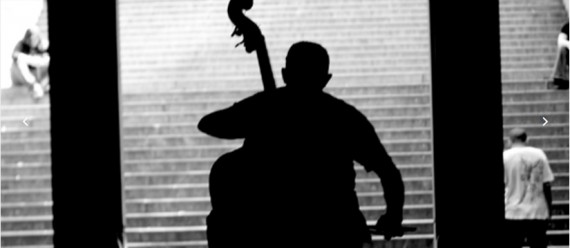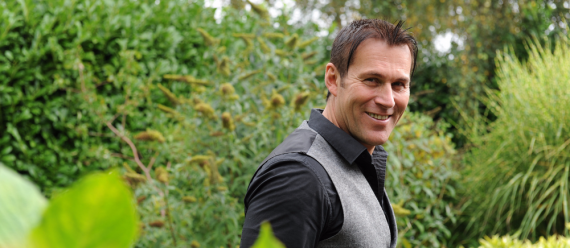by Judith Hendin, Ph.D.
It is an honor and a privilege to share an approach to healing and consciousness that has developed from the seminal work of Hal and Sidra Stone, originators of Voice Dialogue and the Psychology of Selves.
Hal and Sidra have long taught that a whole cast of characters lives inside us. These characters run the gamut from the pusher that urges us to work hard all day long, to the caretaker that takes care of other people, to the inner child that wants to curl up and snuggle with a puppy. Each of these parts, or selves, is alive in us. Each has its own point of view. And each has its own distinct energy that affects the body tremendously!
We identify with some of these parts and live our lives from them. If, for example, you get a lot done most days, your pusher is a major part of you, one that we call a “primary self.” The opposite of this we call a “disowned self.” A disowned self often lies buried, and at some time in our lives it wants to emerge. In many cases of illness, disowned selves desire to be known. We can look at much pain or illness as the call of the disowned self, and we can treasure the body as a guide to this gem within us.
I hope we can circumvent the guilt that has arisen from the idea that people create their own illness. This is the farthest thing from the truth. Disowned selves lie in the unconscious. As the great psychologist Carl Jung said, “The unconscious is unconscious.” We have no access to the unconscious until its contents start to emerge in dreams, in relationships, or in the body. This is truly a no-fault situation.
Let me say that when I began working with the body and selves in 1992, it was a process of pure discovery. To my surprise, the selves emerged spontaneously from the body. While I was familiar with many kinds of body-mind therapy, recognition of selves and their vivid energetic aliveness added a new dimension. Here’s the kind of session that happened:
Walt’s Playful Side Heals His Headache
Walt, a manager at a local business, slunk into my office with his head pounding. “It’s been a long day, lots of pressure and decisions,” he explained. “My head throbs at the end of a day like this.”
At my suggestion, Walt agreed to explore the headache. I instructed him to lie down on the sofa and I led him through a relaxation process. Then I asked Walt to tune into the energy of the headache.
“Do any images come to you?” I asked.
“I see something light and yellow,” Walt said.
“Stay with that light, yellow energy. What do you notice next?” I asked.
“ Play. That’s weird, but somebody says, Be lighthearted and playful. ”
So he stood up and together we acted silly, grinning and laughing all the while.
“How’s the headache?” I asked after a few minutes.
Walt was silent. He looked amazed. “Good grief, it’s gone.”
And it stayed gone for the rest of the hour.
Quick Summary for Walt
What is the primary self for Walt? A responsible part that feels pressured and has to make decisions.
What is the disowned self? Playful.
What is the energy of the disowned self? Silly, fun.
Can you feel those energies in your own body? Letting the energy of a buried self surge through the body is the key to healing with selves.
The Adventure
When a self in us is ready to be known, it leaves a trail, much as Hansel and Gretel left a trail of breadcrumbs so they could be rescued from the witch’s gingerbread house. Taking into account that many ailments are caused by environmental, nutritional, or genetic factors, in many illnesses there may also be a self that is trying to be known. It’s trying to get our attention. It’s the part that holds the medicine.
Some selves are easy to discover. A couch potato is yearning to exist in the life of a busy executive. A laughing kid cavorts within the strictest schoolteacher. Common sense, or a good therapist, can pinpoint the underlying cause of many symptoms. An adventure begins when we start with a symptom that has no apparent cause and discover the self behind it.
I’ve done thousands of sessions, and in every single case, a self emerged from the symptom. There was always “someone” inside who wanted to express.
The beauty is that we can help anyone with a body symptom find the disowned self that wants to come through. Then by encouraging its expression, we can foster healing and consciousness.
Drama and Movement
For healing to happen, we may need to give ourselves permission to be dramatic. This is where my performing dance background has contributed to the development of this approach. I encourage full energetic presence of the disowned self, in motion and sound. This lets the disowned self flush the body with fresh, new energy, be it yearning, yelling, weeping, skipping merrily, laughing, or any other form of expression.
For instance, just before Christmas, Paul developed a debilitating case of sciatica. The sciatic pain led us to a mischievous sprite who wanted to be messy instead of trying to keep order (the job of the primary self) during the busy holiday season. This one made a grand mess in my office as it threw books on the floor and scattered Kleenexes and pillows everywhere, laughing all the while. The sciatic pain stopped on the spot!
Bodies Are Not Logical
How do we find the self that is trying to express? Not by logic or rationality. The body is connected to the unconscious. We can call this nexus the body-psyche. The language of the body-psyche is not logical or rational, it is the language of symbols, the language that we are familiar with in dreams. As we follow the symbols that arise from symptoms, we have a direct route from the body to the inner world. Symbols always lead to the self that is trying to express.
Peggy, a young professional woman, faced the bleak prospect of a potentially terminal lung disease with no known cause. As our session began, Peggy lay down, went through a deep relaxation, tuned into the energy of the lung disease, and waited for images to appear. She began to sense a “scary sadness. It feels like a black hole, empty,” she said.
“Tell me more about this black hole,” I said.
“There’s a coffin. It’s only about an inch wide.”
“That is a very small coffin,” I said, wondering if an inner child might be surfacing. “Is anyone in the coffin?”
“Little Peggy is in there. She’s holding back her tears.” This led to the realization that Peggy had held back her emotions ever since childhood as a way to protect her over-burdened mother. This inner child was the Self Behind the Symptom and deserved a lot of care now so she could cry her tears.
Two-fold Benefits
There are two benefits from approaching body symptoms in this way. The first benefit may be physical healing. When the disowned self comes through, the energy shift of the body is so profound that healing may happen. Analysis of 144 body symptoms of my clients showed that 63 percent of these symptoms healed and 22 percent improved. We were thrilled with these results.
Second, a disowned self points us to a new way of being in the world. As we gradually introduce this new self, we develop an Aware Ego that can embrace both sides. The woman with fibromyalgia who discovers she thirsts to speak up for herself needs to practice holding both sides – the part that stays quiet and the part that speaks up.
I believe bodies are devised to guide us in consciousness. Follow the energy of pain or illness and you will find characters inside bursting to express – emotions held back for decades, a little child sweetly playing, Aphrodite’s sexy hips swaying. All these, and many more, are precious medicine.
Quick Summary
- Body and psyche are intimately connected. When we have a body symptom, often a part of us that has been buried, or disowned, is trying to express.
- To find this part, we follow the symbolic language of the body-psyche. It always leads to a self.
- This Self Behind the Symptom is gloriously specific. It will not generically say, “I’m angry,” it will specifically say, “I’m angry at so-and-so about such-and-such.”
- This self is energetically, vividly alive. As it expresses, it literally changes body energy and may help the body heal.
- If the self wants to move or make noise, we encourage it, because this brings the self more fully and exactly into the body.
- Time frames for healing vary, from right in the moment to a healing path that can take years. We have patience as it unfolds.
- There is always a primary self that holds the opposite values of the disowned self. We learn to embrace both sides and develop the Aware Ego that has the capacity to choose. The Aware Ego is fundamental to Hal and Sidra Stone’s work.
- In the spirit of Voice Dialogue, this approach to the body can be integrated into any system of healing or consciousness work.



















